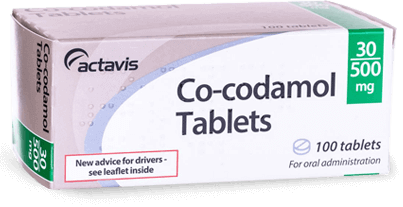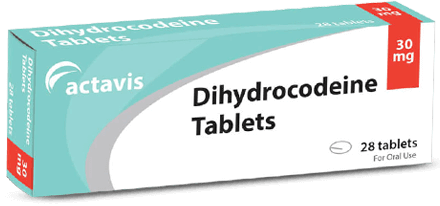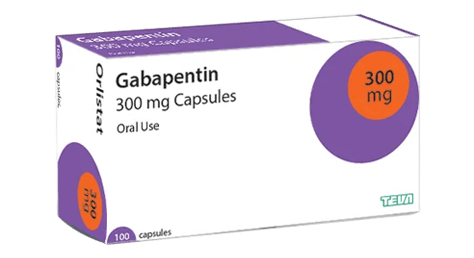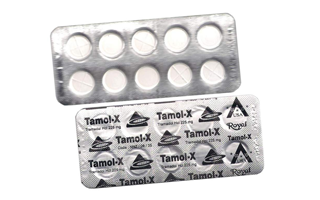Painkillers
Showing all 9 results
-
Sale!

Amitriptyline
$113.00 – $465.00 Select options This product has multiple variants. The options may be chosen on the product page -
Sale!

Carisoprodol
$105.00 – $570.00 Select options This product has multiple variants. The options may be chosen on the product page -
Sale!

Co-codamol
$113.00 – $465.00 Select options This product has multiple variants. The options may be chosen on the product page -
Sale!

Codeine
$113.00 – $465.00 Select options This product has multiple variants. The options may be chosen on the product page -
Sale!

Dihydrocodeine
$107.00 – $475.50 Select options This product has multiple variants. The options may be chosen on the product page -
Sale!

Gabapentin
$113.00 – $465.00 Select options This product has multiple variants. The options may be chosen on the product page -
Sale!

Pregabalin
$113.00 – $465.00 Select options This product has multiple variants. The options may be chosen on the product page -
Sale!

Tapentadol
$99.00 – $585.00 Select options This product has multiple variants. The options may be chosen on the product page -
Sale!

Tramadol
$95.00 – $393.00 Select options This product has multiple variants. The options may be chosen on the product page
Welcome to our online pharmacy UK painkiller section!
What Is Analgesic (Painkiller) Medication?
Pain is classified as either acute (short-term) or chronic (long term). Acute pain is frequently described as severe and brief, and it is usually the result of an injury. Chronic pain can range from mild to moderate pain, be present for an extended period of time, and be caused by conditions or diseases that require ongoing treatment.
Pain is an unpleasant sensation in any part of the body that alerts you to the fact that something is wrong. It can be throbbing, stabbing, aching, or described in other ways. It is inconvenient, but it can sometimes render a patient incapacitated.
Pain can also cause other physical symptoms such as weakness, nausea, and dizziness. It can result in emotional symptoms like mood swings or irritability. When left untreated, it can have an impact on patients’ lifestyles and standard of living.
Pain cannot be cured; however, it can be managed with analgesics, or painkillers. These medications are specifically designed to treat various pains and discomforts in the body.
There are numerous pain medications available, including opioids, muscle relaxants, and steroidal anti-inflammatory drugs. These medications all work in different ways in the body, but they all help with pain management. Patients can obtain pain relievers from a variety of websites accessible via the internet.
How Do Painkillers Work?
What Is Painkiller (Analgesic) Medication? Pain is classified as either acute (short-term) or chronic (long term). Acute pain is frequently described as severe and brief, and it is usually the result of an injury. Chronic pain can range from mild to moderate pain, be present for an extended period of time, and be caused by conditions or diseases that require ongoing treatment.
Pain is an unpleasant sensation in any part of the body that alerts you to the fact that something is wrong. It can be throbbing, stabbing, aching, or described in other ways. It is inconvenient, but it can sometimes render a patient incapacitated.
Pain can also cause other physical symptoms such as weakness, nausea, and dizziness. It can result in emotional symptoms like mood swings or irritability. When left untreated, it can have an impact on patients’ lifestyles and standard of living.
Pain cannot be cured; however, it can be managed with analgesics, or painkillers. These medications are specifically designed to treat various pains and discomforts in the body.
There are numerous pain medications available, including opioids, muscle relaxants, and steroidal anti-inflammatory drugs. These medications all work in different ways in the body, but they all help with pain management. Patients can obtain pain relievers from a variety of websites accessible via the internet. How Do Pain Relievers Work? Taking a pain reliever does the trick by relieving pain and restoring our health. However, how do these wonder drugs work, and how do they know where the pain is?
Nerve endings are abundant in our bodies and can be found in the skin and tissues. Certain nerve endings are responsible for pain perception. When cells in the body are injured or damaged, they release chemicals known as prostaglandins. Depending on the severity of the injury, this causes either acute or chronic pain.
These nerve endings are sensitive to this chemical because nerves respond by picking up and transmitting pain messages through the nervous system and then to the brain. This process is what causes the patient to experience pain, whether mild or severe.
Pain relievers such as paracetamol and ibuprofen prevent these damaged cells from producing and secreting prostaglandin. When this chemical is not released, the brain does not receive pain impulses clearly or quickly. This is how analgesics dilute and eventually eliminate pain.
This is a general painkiller pathway; however, different pain medications have different bodily pathways. These medications are typically more potent than standard nonsteroidal anti-inflammatory drugs (NSAIDs).
Opioid painkillers, for example, target pain by attaching to opioid receptors in the brain. This process prevents the pain impulse from being interpreted by the brain, thereby weakening the sensation of pain entirely. Most opioid analgesics can be combined with paracetamol and other nonsteroidal anti-inflammatory drugs (NSAIDs). These medications are mostly used to treat chronic pain. Muscle relaxants work by changing how the body perceives muscle pain. These medications reduce excitement in the brain and spinal cord in order to alleviate pain caused by muscle spasticity and spasms.
Different Types Of Painkillers
Injections, tablets, capsules, or liquids, and even suppositories are all methods of administering painkillers. Some of them can also be dissolved in water (soluble tablets). Some pain relievers are also available as topical creams, ointments, or patches.
There are various types of pain relievers available. This enables patients to purchase painkillers tailored to their specific condition.
These are some examples:
- Nonsteroidal anti-inflammatory drugs (NSAIDs)- NSAIDs include ibuprofen, diclofenac, and naproxen. Because high doses of NSAIDs can cause gastrointestinal problems, these pain relievers are usually prescribed in low doses. Paracetamol can increase the body’s pain tolerance.
- Opioids (opiates) are medications that are naturally extracted from the poppy plant (e.g., morphine) or created in a laboratory (e.g. tramadol). Weak opioids are still very effective pain medications that are used to manage severe pain; however, there are risks of addiction and side effects, so they must be used with caution. Strong painkillers, such as oxycodone or morphine, are more potent opioids.
- Certain antidepressants and anticonvulsants- When used at the lowest possible dose, some antidepressants and anticonvulsants can help relieve nerve pain that other pain medications cannot control. Antidepressants, in higher doses, can also help with depression and chronic pain.
- Muscle relaxants- These pain relievers can be used if your muscles are constantly spasming, causing severe discomfort. It can also be used following surgeries or certain treatments, as muscles can become tender and tight following surgery. This pain reliever can be combined with other medications to provide effective pain relief.
- Corticosteroids are injections that are given at the site of musculoskeletal injuries. It has potent anti-inflammatory properties and can also be taken orally in pill form.
In the past, a famous painkiller cocktail containing cream of coconut, navy rum, and pineapple juice was a common pain relief solution. Orange juice may also be used in these cocktails. This painkiller guarantees no pain after a sip; however, patients continue to purchase strong painkillers because they work more effectively.

Types Of Pain That Painkillers Can Relieve
Pain, whether caused by an injury or a long-term condition, is an unpleasant experience. Different people react to pain in different ways, so while you may be able to manage some pain, another person may find it incapacitating. Even though the experience of pain varies, the various types of pain can be classified.
These are some examples:
- Inflammatory pain occurs when the body’s musculoskeletal soft tissues are damaged. It is usually limited to one area and is described as aching and dull. The pain is most commonly felt in the hip, hand, or shoulder. It can also occur in the lower back as a result of heavy lifting or an injury. Anti-inflammatories, such as paracetamol or aspirin, are the most effective pain relievers for this condition.
- Acute pain is defined as pain that lasts for a short period of time, ranging from hours to about three months. It is related to a soft-tissue injury or a short-term illness, which means it will go away once the injury or illness is healed. If the injury is not properly healed, acute pain can progress to chronic pain.
- Chronic pain is defined as pain that lasts for an extended period of time. It can be intermittent or constant, for example, headaches may be considered chronic if they occur for many months or years, even if they are not present all of the time. Lingering pain is usually caused by a medical condition such as fibromyalgia, arthritis, or a spine condition. Strong painkillers are typically purchased by the patient to control lingering pain.
- Neuropathic pain is caused by an injury or malfunction of the somatosensory nervous system. The pain is caused by nerve damage. Patients experience a burning, tingling pain with no obvious source. These symptoms are treated with strong pain relievers.
- Nociceptive pain- Pain caused by physical damage to the body, such as a sports injury, dental problems, or arthritis.
Examples Of Strong Painkillers
When pain becomes too intense and uncontrollable with standard pain medications, doctors frequently prescribe strong painkillers. These are typically opioid analgesics, anticonvulsants, or antidepressants. Drowsiness and a decreased level of alertness are possible side effects of this type of painkiller.
Patients purchase powerful analgesics such as:
- Pregabalin and gabapentin are anticonvulsants.
- Tramadol and codeine are opioid analgesics.
- Amitriptyline and nortriptyline are tricyclic antidepressants.
These medications provide significant pain relief; however, some are more potent than others. The table below compares the potency of these medications, pregabalin, tramadol with codeine, and gabapentin:
- Tramadol is a synthetic opioid pain reliever that was developed in the 1960s. It is considered safer than other opioids; however, it is extremely potent and ideal for severe pain.
- Pregabalin is an anticonvulsant that can also be used to treat neuropathic pain and fibromyalgia. These conditions frequently lack adequate pain control; however, pregabalin provides adequate relief.
- Codeine is a type of opiate that is used to treat less severe pain. Although it is a natural opioid, it does not have severe side effects, allowing patients to use it safely.
- Gabapentin is an anticonvulsant that is used to treat neuropathic pain caused by central pain, diabetic neuropathy, and postherpetic neuralgia.
Patients who purchase strong pain relievers frequently require a prescription from their doctor, as these medications can become addictive. When taking these pain relievers, it is critical to stick to the recommended dosage.

Which Painkiller Is Best?
It all comes down to the type of pain you have when purchasing painkillers. The medication you receive must be capable of treating the same pain that you are experiencing. Sometimes you have to try several pain relievers before finding one that works for you.
The best pain reliever should be chosen using the following criteria:
- If you have inflammation-related pain (back pain, headaches), you should consider pain relievers such as paracetamol and NSAIDs. These medications work best when taken twice daily.
- If you suffer from pain caused by damaged or sensitive nerves, such as diabetic neuropathy or shingles, you can purchase powerful painkillers that alter the way the CNS functions. Tramadol, Tapentadol, and pregabalin are examples of such medications.
- Muscle relaxants or corticosteroids can be used to treat pain caused by tender muscles or injuries.
Patients should also select the best pain relievers based on their potential side effects. Because the goal of taking medication is to improve your quality of life, its benefits should outweigh its drawbacks.
Side Effects Of Painkillers
Experts carefully examined the side effects of painkillers and discovered that they can be effectively managed. Many pain medication side effects can also be symptoms of an underlying condition that is causing the pain. This is why symptom management must be approached collaboratively.
The following are common side effects of pain medications:
- NSAIDs can raise blood pressure, but the average increase is small. Stomach cramps, indigestion, and drowsiness are some of the other side effects. Excessive use of paracetamol can harm your liver, so proceed with caution.
- Adverse effects of opioid pain relievers include headaches, nausea, and constipation. It can cause respiratory depression at higher doses.
- Muscle relaxants can cause dizziness, dry mouth, and drowsiness.
Measures such as following the instructions on information leaflets and being aware of specific warnings and interactions before purchasing pain relievers should be taken, as they can reduce the occurrence and severity of adverse effects. Seek medical attention if these side effects persist and become dangerous.
Buy Strong Painkillers Online
Patients used to pay exorbitant prices for pain relievers in crowded dispensaries. Patients can now visit an online pharmacy like ours using their phones or computers. When going to the doctor seems impossible, our dependable online platform comes in handy. Tramadol, pregabalin, and other approved pain medications are available in England and Wales.
When you purchase pain relievers from our online pharmacy, you will receive the following benefits:
- Important information such as painkiller side effects, dosage, and usage guidelines are available on the website, making it simple and easy for you to access.
- Because our medications are priced lower than those of other physical pharmacies, you can treat pain at a low cost.
- Our online pharmacist will recommend the most effective pain relievers for you. If you have any questions, you can easily communicate with them.
- It is private; our pharmacists will not disclose any patient information to anyone else.
- You can buy painkillers at any time because our website is open 24 hours a day, seven days a week.
- We have a variety of pain medications available along with the conditions they treat, making your decision-making process easier.
- You have several delivery options, including express shipping.
Don’t put off treatment any longer; order top-quality pain relievers, as well as anxiety medication and sleeping pills, from Europe’s #1 Online Pharmacy UK today!




